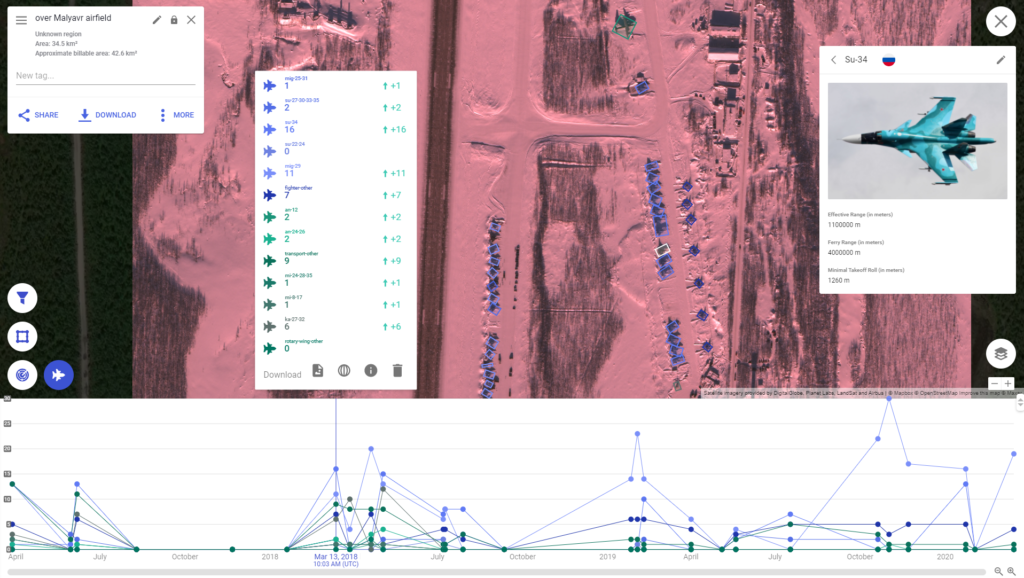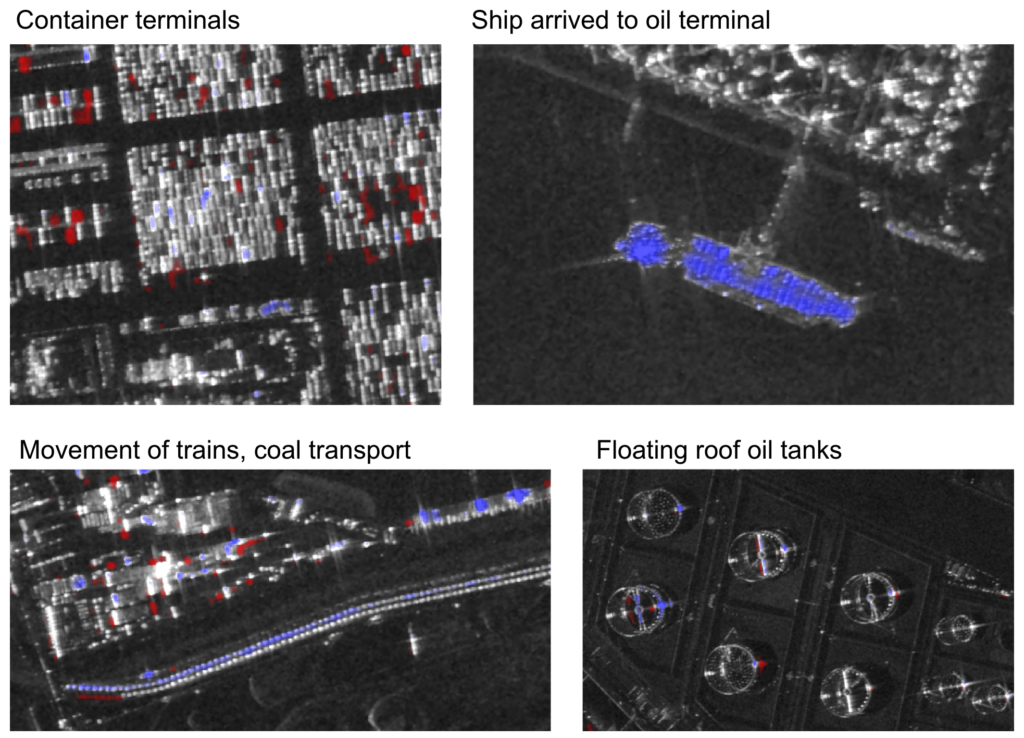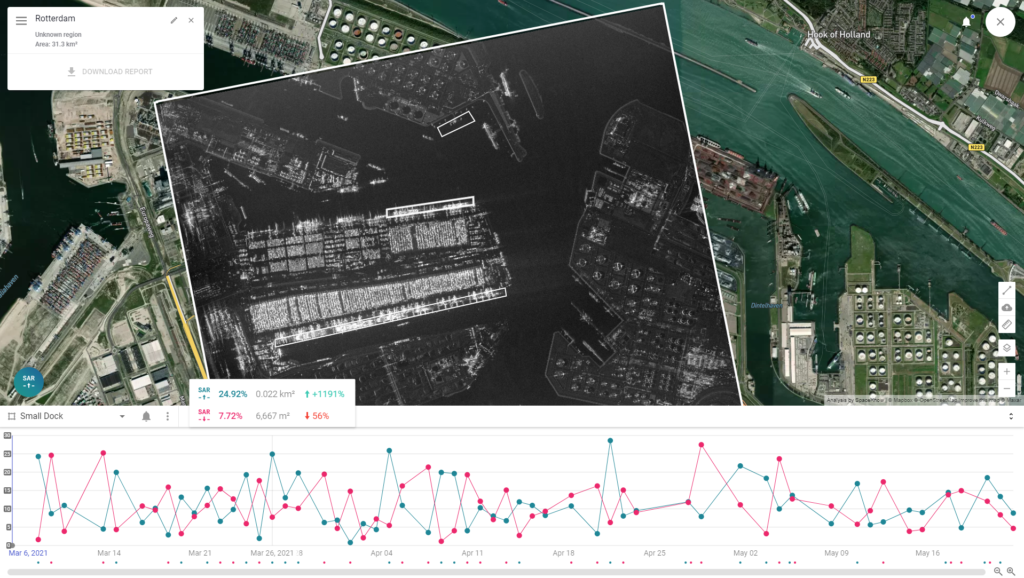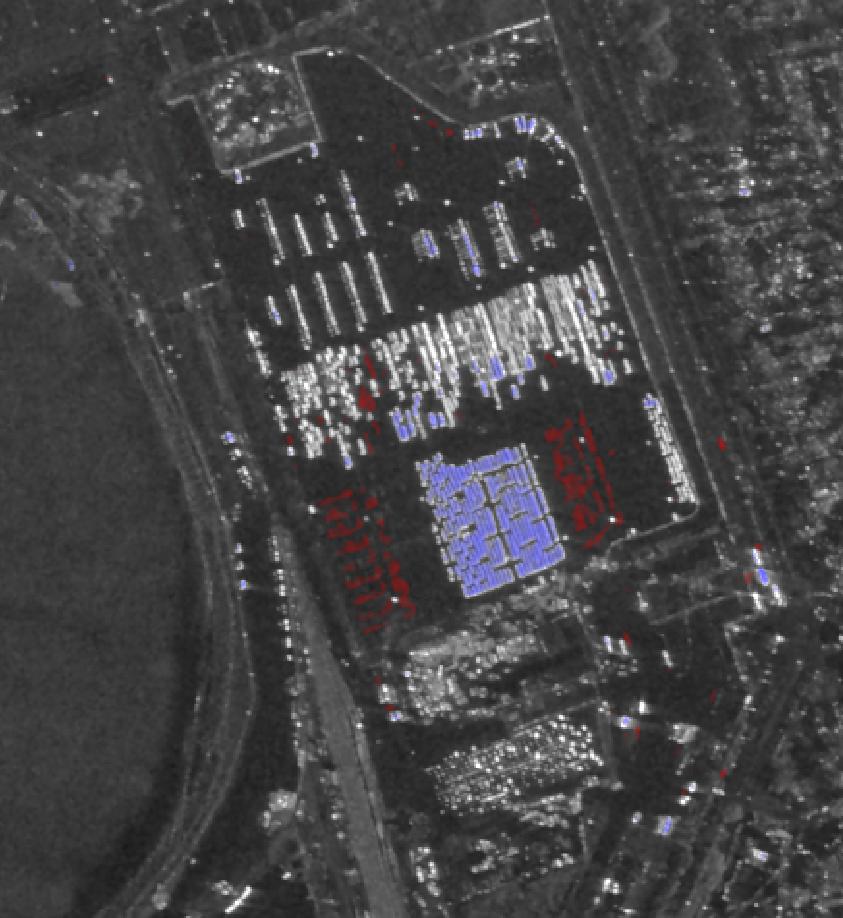Although Synthetic Aperture Radar (SAR) has been widely used for Earth remote sensing for more than 30 years, the emergence of small, new space radar satellites have enabled an unprecedented capability in information gathering and intelligence extraction. A specialist SAR company, our valuable partner ICEYE has this year, as the first company in the world, introduced a ground breaking capability called Daily Coherent Ground Track Repeat, enabling persistent monitoring and gathering of valuable data on any location on Earth, every day.
At SpaceKnow, we recognized the importance of SAR Imagery Analytics and over the last year, our teams have been hard at work to utilise our machine learning process to develop extremely well performing Artificial Intelligence algorithms, which enhance the value of SAR imagery for the defense & intelligence community. It was only natural to very soon closely align our activities in order to prepare to exploit the ICEYE Daily Coherent Ground Track Repeat and make ready for the market a complete solution providing fully reliable, weather resilient automated daily monitoring of any area of interest (AOI) in the world.
At SpaceKnow, our main objective was to maximise the value of ICEYE Daily Coherent Ground Track Repeat by fully automating and simplifying the way how SAR Change Detection is performed and delivered to end users. The first step was to create a modern, simple user interface. We used the SpaceKnow Defense Dashboard, our state-of-the-art solution for satellite imagery analysis, as a point of departure (Figure 1). The Defense Dashboard was scaled down by removing a lot of our currently available advanced features to fully focus on automating the daily ICEYE image ingestion process, visualisation of the image as well as results of the analysis and fine-tuning the timeline, notifications and alerts features which we see as critical for the Defense and Intelligence users of this capability. The ultimate goal is to have the system perform all the monitoring and change detection workflow automatically and notify users only if something unusual is happening. That’s the time for users to step in, perform a detailed inspection and decide on further action.

To explain how SpaceKnow automates SAR change detection, we first quickly review what we see in SAR images. A SAR image is given by the radar signal reflected from the objects on the surface. Bright spots in the image correspond to high values of reflected radar signal, dark areas exhibit low radar backscatter. Man made structures and metal objects (ships, containers, airplanes) generally exhibit strong radar reflection and therefore appear bright in the SAR image (see Figures 2,3),. Figure 2 shows an optical and a SAR image of an airfield, Figure 3 shows an example of an optical and SAR image of a container terminal. Both aircraft and containers are clearly visible at this high resolution.


Movement of objects leads to changes of the radar signal. We detect these changes. Given a well selected area of interest, we can interpret these changes of radar signal as for example arrival or departure of ships/planes/trains, building of new infrastructure, removal of supplies etc.
In our SAR change processing pipeline, we use SLC SAR data as the input. We do all the processing from SLC data in house in order to have full control over the whole image processing chain. The whole workflow can be divided into 2 parts: In the first “pre-processing” part, the input SLC data are calibrated, speckle filtered, geocoded, and orthorectified. In the second part, images are grouped to image pairs, image pairs are precisely co-registered and changes in between each image pair are detected. For change detection we use our proprietary change detection algorithm which also includes data normalisation and uses local statistics to adaptively detect significant changes in the AOI (focusing on changes of man made structures, see Figure 4).
We detect changes in between a pair of images (with respect to previous and with respect to first) and measure the area that has changed. The changed area can be expressed in m2 or % of the whole AOI. The change area represents an area of significant changes which happened in a time interval in between the acquisition of the first and the second image of the image pair.
We further distinguish positive and negative change where positive corresponds to increase and negative to decrease of the underlying SAR signal.
Through the definition of sub-regions, we can monitor all types of equipment, including but not limited to ships, aircraft, oil tanks, containers, coal piles and more. The crucial element is the correct selection of an AOI and set-up of change detection parameters. In a well selected AOI, the detected change area can be interpreted as for example an amount of containers which were removed, a new ship arriving at a dock, movement of trains or changes in the level of material within a silo. In specific applications, general change detection can be fused with results of our semantic segmentation for improved interpretability. Change detection can be further trained for a specific type of changes in order to provide customised, application specific solutions.

For the ICEYE Daily Coherent Ground Track Repeat Capability, SpaceKnow has -by automating the SAR change detection process- enabled really large scale, frequent analysis of time series in just a few clicks. Our frontend interface (Figure 5) was designed to be simple and straightforward to be used by non-experts, yet it offers additional advanced options, like change detection algorithm parameterization, that allow expert users to extract best possible insights. Within this interface, users have the ability to receive daily high-resolution SAR imagery of an AOI, visualise imagery, create an unlimited number of sub-polygons for automated monitoring, set up the parameters of change detection and get immediate alerts and reports about activity within these polygons.

This fully automated overwatch-like capability has been what the defense community has been asking for, especially for highest priority area of interest monitoring, and together with ICEYE, we at SpaceKnow are thrilled that we can bring this to the market in Q4 2021.
Please see the full webinar from July, in which we have, together with ICEYE, presented our work to the world.
[gated-webinar-iceye]
For further details and information about our Defense & Intelligence solutions do not hesitate to reach out and contact us directly at info@spaceknow.com.
Written by Filip Kulstrunk, VP Defense & Intelligence, on behalf of SpaceKnow.


